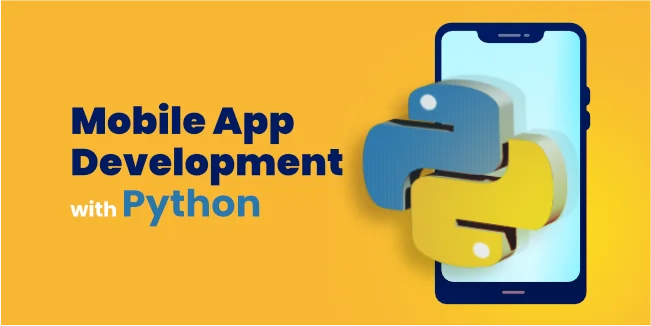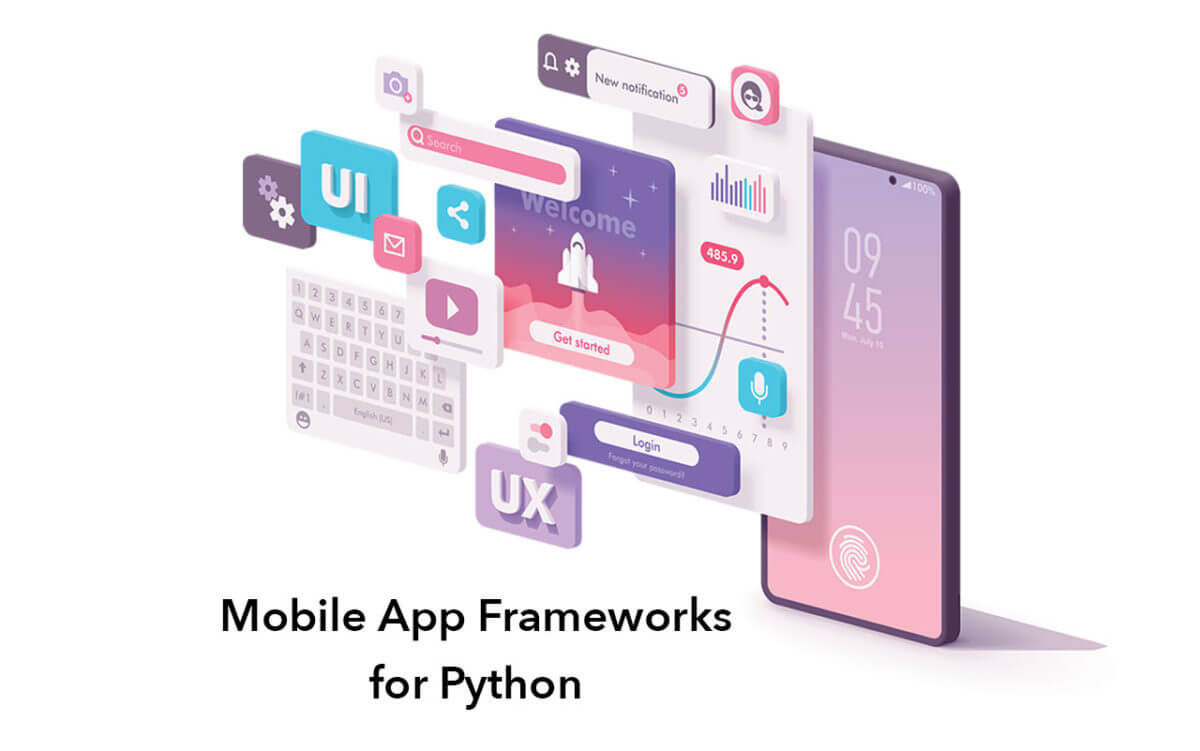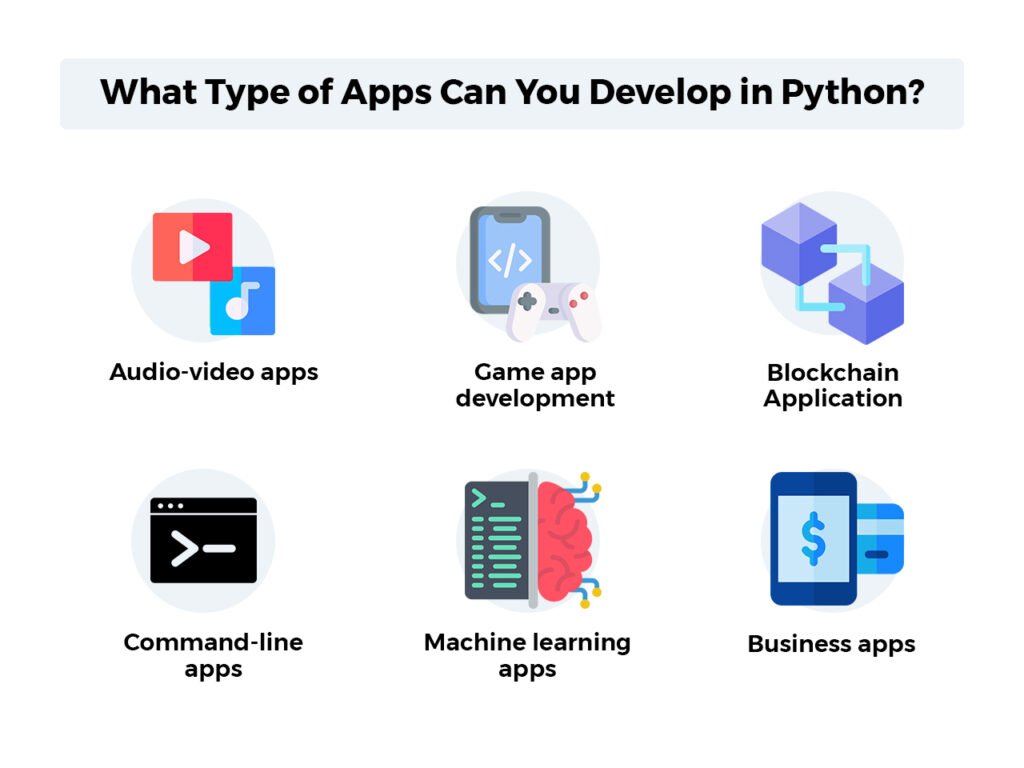Developing mobile apps in Python is streamlined with frameworks like Kivy and BeeWare. These tools enable cross-platform compatibility and native user experience.
Python, a language known for its readability and efficiency, is increasingly popular for mobile app development. Developers favor Python due to its vast libraries and frameworks that simplify coding. Kivy, an open-source Python library, provides a natural user interface (UI) for multi-touch apps and supports Android and iOS.
Meanwhile, BeeWare is a collection of tools that allow writing native Python apps for mobile and desktop environments. These frameworks facilitate rapid development and ensure that the apps can run on different platforms, significantly reducing the time and resources needed for separate codebases. Using Python, developers can focus on creating feature-rich, responsive, and user-friendly mobile applications.
The Rise Of Python In Mobile Development
Python has become a star in mobile app development. Its simple syntax and versatility make it a top choice. It supports quick development and suits many platforms, leading to a boom in Python mobile apps.
Popularity Surge Among Developers
Python’s popularity is skyrocketing. Developers love its easy-to-read code. It’s perfect for beginners and pros. Python lets developers build apps fast. This speed makes Python a go-to language in the tech world.
- Easy to learn: Python’s clear syntax is like everyday English.
- Rich libraries: Python offers many tools for developers.
- Rapid development: Python makes app creation quick and efficient.
Python’s Role In Cross-platform App Creation
Python excels at making apps for many devices. It helps developers write once and run anywhere, which means an app can work on iOS, Android, and more without extra code.
| Framework | Feature |
|---|---|
| Kivy | Builds apps for all platforms with rich features. |
| BeeWare | Creates native apps in Python with native user interface. |
| PyQt | Designs professional and custom apps for various platforms. |
With these tools, Python helps developers save time, allowing them to focus on creating great apps. Python’s role in cross-platform app development is key to its rise.

Credit: mdevelopers.com
Core Benefits of Developing Mobile Apps in Python
When diving into mobile app development, Python stands out for its simplicity and power. Developers favor Python for various reasons. Let’s explore the core benefits that Python offers when building mobile applications.
Ease Of Use And Readability
Python’s straightforward syntax makes it an ideal choice for developers. This programming language resembles everyday English, enhancing readability and reducing new programmers’ learning curve. Python allows for the quick writing of code, and its clear layout makes it easy to maintain. This is particularly beneficial when developing mobile apps, where the simplicity of code can significantly speed up the development process.
Rich Libraries And Frameworks
Python boasts vast libraries and frameworks invaluable for mobile app development. These resources reduce the need to write code from scratch, offering pre-built code that developers can use. For example, Kivy and BeeWare are Python frameworks designed to build mobile apps. They provide tools that make creating a user interface more accessible and handle device-specific functionalities. With these rich libraries, Python helps cut down development time and effort.
Here’s a quick look at some popular Python libraries and their uses:
| Library/Framework | Use |
|---|---|
| Kivy | Creating applications that run on Android, iOS, Linux, OS X, and Windows with a natural user interface. |
| BeeWare | Writing native Python apps that run on Android and iOS. |
| PyQt | Developing cross-platform GUI applications. |
| SL4A | Running Python scripts on Android environments. |
Choosing Python for mobile app development is a smart move for any developer. Its ease of use and rich libraries make it a powerful tool in the app development arsenal.
Frameworks And Tools For Developing Mobile Apps in Python
Python shines in the realm of mobile app development. With its clear syntax and powerful libraries, Python has become a go-to for developers. Specific frameworks and tools stand out in the world of Python mobile development. They make building apps easier and faster. Let’s dive into some of the top ones.
Developing Mobile Apps in Python Example
Kivy For Multi-touch Apps
Kivy is a popular choice for creating multi-touch applications. It’s open-source and cross-platform, meaning your code works without changes on iOS, Android, and other platforms.
- Easy to learn: Kivy’s syntax is user-friendly.
- Widget library: It comes with many pre-built elements.
- GPU Accelerated: Your apps run smoothly.
Kivy is especially good for applications that need gestures and multi-touch. It’s perfect for games, interactive art, and other innovative interfaces.
BeeWare For Native Utilities
BeeWare is the toolkit for creating native-looking utilities. It allows you to write your app in Python and then deploy it on multiple platforms.
- Write once, run anywhere: Create your app, and BeeWare handles the rest.
- Native widgets: Your app feels right at home on any device.
- Extensible: Add functionalities with ease.
BeeWare’s tools are simple but powerful. They help you craft apps that blend seamlessly with the platform’s native components.
Designing Your First App With Python
Embarking on your first mobile app project in Python is exciting and manageable. Python’s simplicity and vast libraries make it ideal for beginners and professionals. This section guides you through the initial steps of designing your app, from sketching features to setting up your development environment.
Sketching Out App Features
Identify what your app will do. Start by defining the core functionality that solves users’ problems. List down the features that are essential for your app. Use simple bullet points to keep things clear and concise.
- User login
- Profile creation
- Data visualization
- Notifications
Think about the user experience. Sketch simple wireframes to visualize the layout. Tools like Balsamiq or Figma can help you create these sketches digitally.
Setting Up The Development Environment
Setting up a proper environment is crucial for a smooth development process.
- Install Python: Ensure you have the latest version of Python installed. You can download it from
python.org. - Choose an IDE: An Integrated Development Environment (IDE) like PyCharm or VS Code enhances coding efficiency.
- Install libraries: Use pip to install necessary libraries, such as Kivy or PyQt, to build the user interface.
Test your setup by creating a simple ‘Hello World’ application. This verifies that everything is working correctly.
Here is a basic code snippet:
print("Hello World")With these steps complete, you’re ready to dive deeper into app development!
Best Practices In Python Mobile App Development
Creating mobile apps with Python comes with a set of best practices. These practices help developers build efficient, readable, and maintainable apps. Here, we will discuss two crucial aspects: code organization and performance optimization.
Code Organization And Modularity
Well-structured code is the backbone of any robust mobile application. Organizing code into modules makes it easier to manage and understand. A modular approach allows for reusing code across different parts of the app, saving time and reducing the chance of errors.
- Use packages and modules: Group related functions and classes into modules and packages.
- Follow naming conventions: To improve readability, use a consistent naming scheme for variables, functions, and classes.
- Implement classes: Use classes to encapsulate data and functions that work closely together.
Remember to leverage Python’s __init__.py files. They turn directories into Python packages.
Performance Optimization Techniques
Performance is critical for the success of mobile apps. Python provides various ways to optimize app performance.
- Profile your code: Identify bottlenecks with profiling tools like cProfile.
- Use built-in functions: They are faster and more efficient than custom ones.
- Optimize loops: Minimize the logic within loops and consider list comprehensions.
- Limit memory usage: Use generators for extensive data sets to manage memory better.
Use ORM (Object-Relational Mapping) frameworks such as SQLAlchemy for database interactions. They can dramatically speed up database queries.
| Technique | Description | Benefit |
|---|---|---|
| Caching | Store frequently accessed data in memory | Reduces load times |
| Lazy Loading | Load data on demand | Improves initial app load time |
| Multi-threading | Perform operations in parallel | Enhances app responsiveness |
To ensure the UI remains responsive, keep your main thread free from heavy tasks and offload intensive operations to background threads.
Integrating Apis And Cloud Services
Python stands as a powerful language for mobile app development. It allows seamless integration with APIs and cloud services. This integration brings a world of functionalities to mobile apps. From data storage to complex processing, Python interacts smoothly with web services.
Leveraging Restful Apis
RESTful APIs are the backbone of networked mobile applications. Python’s simplicity in sending HTTP requests makes API integration straightforward. Here’s how Python enhances mobile app capabilities:
- Simple data exchange: JSON or XML formats allow for efficient communication.
- Scalability: Apps can grow without compromising performance.
- Flexibility: Easily connect with different services and systems.
With libraries like Requests and JSON, developers can fetch data from the web. This data enriches the user experience.
Cloud Storage And Computing
Python’s adaptability extends to cloud services. These services offer vast storage and computational power. They free up device resources. Python’s cloud integration features include:
- Storage solutions: Save and retrieve data from the cloud.
- Computational services: Perform intensive tasks in the cloud.
- Scalable architecture: Your app can handle more users easily.
Cloud platforms like AWS, Google Cloud, and Azure support Python and provide SDKs for smooth integration. This allows developers to focus on building great apps instead of managing servers.
Testing And Debugging Python Apps
Developing mobile apps in Python requires thorough testing and debugging. This ensures that the app works well and is free from errors. Let’s explore how to test and debug Python apps effectively.
Unit Testing For Robustness
Unit testing is crucial for checking small parts of an app. It helps developers find and fix bugs early. Python offers several tools for this:
- Unit test – A built-in module that tests individual units of source code.
- pytest – Allows for simple and scalable tests.
Here’s a simple example of a unit test in Python:
import unittest
class TestSum(unittest.TestCase):
def test_sum(self):
self.assertEqual(sum([1, 2, 3]), 6, "Should be 6")
if __name__ == '__main__':
unittest.main()
This test checks if the sum of 1, 2, and 3 equals 6. It helps ensure the sum function works correctly.
Debugging Tools And Strategies
Debugging is essential to make apps run smoothly. Python provides several debugging tools:
- PDB (Python Debugger) – A built-in module for interactive debugging.
- PyCharm – An IDE with powerful debugging features.
Effective strategies include:
- Setting breakpoints to pause the app and check its state.
- Inspecting variables to understand issues in code flow.
By using these tools and strategies, developers can quickly find and fix errors in their Python apps.
Deploying Python Apps To App Stores
Deploying Python Apps to App Stores can seem daunting at first. Yet, with the right tools and knowledge, the process is straightforward. Python, known for its simplicity and readability, is a great choice for mobile app development. Once the app is ready, the next step is to share it with the world through app stores.
Packaging Apps For Distribution
Packaging Python apps involves bundling the code and resources into a format suitable for app stores. Tools like PyInstaller, cx_Freeze, and Kivy are popular for this purpose. They create standalone executables that can run on various platforms. Follow these steps:
- Choose a packaging tool compatible with your mobile app.
- Configure the tool to include all dependencies.
- Test the executable on different devices to ensure compatibility.
Remember, each mobile platform has specific requirements. For Android, .apk or .aab files are the standards, while iOS requires an .ipa file.
Navigating App Store Submissions
Submitting your Python app to app stores requires attention to detail. The Apple App Store and Google Play Store have guidelines and review processes. To navigate submissions:
- Create developer accounts on the respective platforms.
- Prepare app metadata, including title, description, and keywords.
- Upload the packaged app files through the developer console.
- Set pricing and availability regions as desired.
- Submit the app for review and address any feedback received.
Always check the latest guidelines for each store. They often update their policies, and staying compliant is crucial for approval.
Real-world Success Stories
The power of Python in mobile app development shines through real-world success stories. This dynamic language has paved the way for some of the most innovative mobile applications today. Let’s dive into some inspiring case studies and extract key lessons from industry trailblazers.
Case Studies Of Successful Python Apps
Python’s versatility has been a game-changer for many apps. Below are a few standout examples:
- Dropbox: This cloud storage giant utilized Python to simplify file sharing and storage on mobile devices. Its success showcases Python’s capability to handle scalability and user-friendly interfaces.
- Instagram: One of the world’s most popular social media platforms, Instagram, was initially built on Python. It demonstrates Python’s strength in managing high-traffic apps with massive data.
- Pinterest: Known for its image sharing and discovery, it also leverages Python to provide seamless user experiences and process vast quantities of images.
Lessons Learned From Industry Leaders
Key takeaways from top industry players include:
| Company | Lesson |
|---|---|
| Dropbox | Optimize Python’s strengths in backend infrastructure for efficient data handling. |
| Utilize Python to manage high user volumes and data traffic effectively. | |
| Python is employed for its ability to process large sets of images and enhance user engagement. |
These stories highlight Python’s flexibility and scalability. They teach us the importance of choosing the right language for the job. Python is a robust option for mobile app development, capable of supporting fast-growing platforms and maintaining a smooth user experience.

Credit: citrusbug.com
Future Trends In Python Mobile App Development
Python’s popularity continues to soar in the realm of mobile app development. It is not just about writing scripts or web applications. Python is increasingly becoming a go-to language for creating innovative and responsive mobile applications. This trend is set to grow with advancements in technology and the expanding ecosystem of tools. Let’s explore the future trends in Python mobile app development.
Emerging Technologies And Python
As new technologies emerge, Python’s role in mobile app development adapts to incorporate these advancements. Python’s flexibility and simplicity make it a prime choice for developers to integrate cutting-edge technologies into mobile apps.
- Machine Learning: Python’s libraries like TensorFlow and Keras are perfect for adding machine learning capabilities to mobile apps.
- Internet of Things (IoT): Python scripts are becoming the backbone of IoT devices, making app integration seamless.
- Augmented Reality (AR): Python’s compatibility with AR tools paves the way for immersive mobile experiences.
The Growing Ecosystem Of Python Mobile Tools
The ecosystem surrounding Python mobile app development is flourishing. Many tools and frameworks are available, making development faster and more efficient.
| Tool/Framework | Use Case | Benefit |
|---|---|---|
| Kivy | Cross-platform apps | Write once, run anywhere |
| Beware | Native apps | Full access to device APIs |
| PyQt | Commercial applications | Strong GUI capabilities |
Developers are leveraging these tools to create more dynamic and robust mobile applications. With an ever-growing list of Python libraries and frameworks, the possibilities for mobile app development continue to expand.

Credit: www.activestate.com
Frequently Asked Questions
Can I Use Python To Build Mobile Apps?
Yes, Python can build mobile apps using frameworks like Kivy or BeeWare, allowing cross-platform development on iOS and Android.
Is Python A Good Language For Mobile Apps?
Python is not typically the first choice for mobile app development. While it can create mobile apps, languages like Swift for iOS and Kotlin for Android are more standard. Python’s utility shines in web development, data analysis, and machine learning tasks.
How Much Does It Cost To Build A Python Mobile App?
The cost to build a Python mobile app varies widely, ranging from $20,000 to $100,000+, depending on complexity, features, and design.
Is Python Used in iOS Development?
Python is not primarily used for iOS development. Swift and Objective-C are the main languages used to build iOS apps. However, Python can be utilized for server-side development or scripting tasks related to iOS apps.
Conclusion
Embracing Python for mobile app development offers numerous advantages, from simplicity to versatility. Whether you’re a beginner or a seasoned developer, Python’s powerful libraries and frameworks streamline the app creation process. Start exploring Python today to enhance your development skills and efficiently bring your innovative app ideas to life.

Driven by a passion for innovation, I am a seasoned tech specialist dedicated to pushing the boundaries of possibility. With 5 years of experience in the ever-evolving landscape of technology, I have honed my expertise in Software Development, Artificial Intelligence, Machine Learning, Drone Technology, 3D Modeling, Automation, Smart Gadgets etc . I am thrived in dynamic environments where creativity meets technical proficiency. My commitment to staying at the forefront of technological advancements ensures that I am not only adapt to change but lead it, shaping the future of tech one breakthrough at a time.
